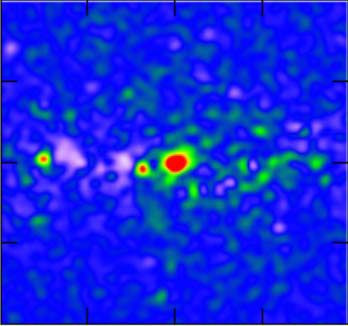By studying the spatial distribution of gamma-ray emission in the Milky Way, astronomers believe they have identified a signature of dark matter annihilation.
We live in a dramatic epoch of astrophysics. Breakthrough discoveries like exoplanets, gravity waves from merging black holes, or cosmic acceleration seem to arrive every decade, or even more often. But perhaps no discovery was more unexpected, mysterious, and challenging to our grasp of the “known universe” than the recognition that the vast majority of matter in the universe cannot be directly seen. This matter is dubbed “dark matter,” and its nature is unknown. According to the latest results from the Planck satellite, a mere 4.9% of the universe is made of ordinary matter (that is, matter composed of atoms or their constituents). The rest is dark matter, and it has been firmly detected via its gravitational influence on stars and other normal matter. Dark energy is a separate constituent.
Understanding this ubiquitous yet mysterious substance is a prime goal of modern astrophysics. Some astronomers have speculated that dark matter might have another property besides gravity in common with ordinary matter: It might come in two flavors, matter and anti-matter, that annihilate and emit high energy radiation when coming into contact. The leading class of particles in this category are called weakly interacting massive particles (WIMPS). If dark matter annihilation does occur, the range of options for the theoretical nature of dark matter would be considerably narrowed.










Comments are closed.